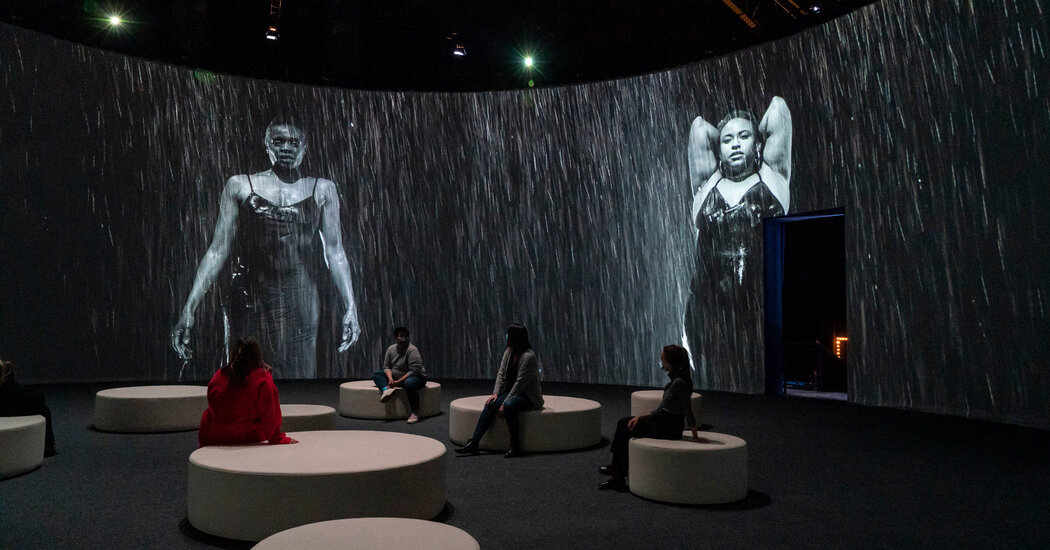
Weems’s analysis of our current political landscape will be familiar to anyone who has been paying attention over the past few years — including, I would imagine, most of those who visit the show on Park Avenue. What is more compelling are the visual and historical connections she makes — often insightful, sometimes funny, and occasionally quite direct — and the way she remixes her earlier work.
In the Cyclorama video, we see two different clips projected on the curved surface: one, a group of white, pro-segregation marchers in 1960s Boston; the other, a group of Black anti-segregation marchers who confronted them in the streets. Weems had originally used the footage in her 2012 installation “Cornered,” installing each on adjacent walls in a gallery in a way that highlighted the confrontation between two sides. Here, we see not so much contrast as continuity — the endless racism and the endless need to protest that racism.
Later, Weems lifts a sequence from her “Louisiana Project” (2003) of shadow puppets enacting a scene of slave-owning ladies having a tea party on the porch of a plantation house. This she overlays with audio of Amy Cooper, who, when an African American bird-watcher asked her to leash her dog in Central Park, infamously called 911 to report him as a threat. The commentary — on the way white women benefit from white supremacy, in the past and in the present — couldn’t be more biting, or stark.
In another sequence, a video of a clown dressed in red, white and blue conducting a brass band is intercut with cable news images of the Jan. 6 pro-Trump insurrection at the Capitol and historical footage of an animal trainer leading an elephant around a ring. (Tom Eccles, the curator of the exhibition, cites the adage “Elect a clown and expect a circus” in his note on the show.)
Other associations are more subtle, and gratifying so, as when Weems alternates silhouettes of men in hoodies walking across the screen in a gridlike array with historical images of prisoners, and coal miners in elevators being transported deep underground, spinning a delicate thread that connects race, incarceration and capitalist exploitation.







